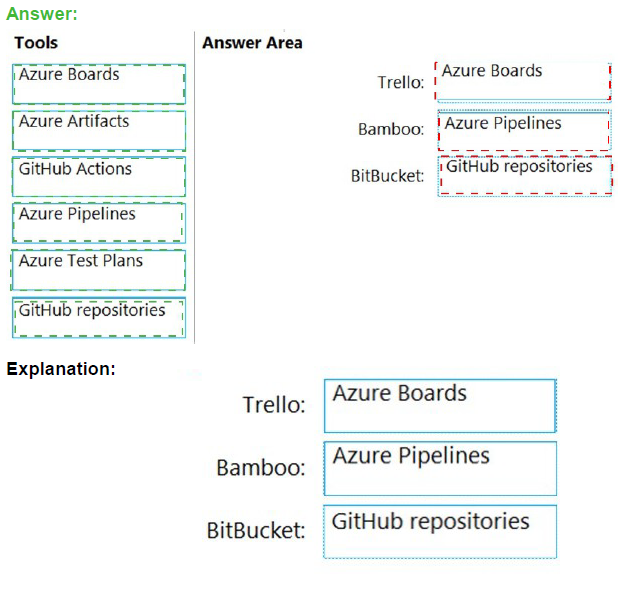
- Email support@dumps4free.com

Topic 4: Mix Questions Set
You have a GitHub repository that contains workflows. The workflows contain steps that execute predefined actions. Each action has one or more versions. You need to request the specific version of an action to execute. Which three attributes can you use to identify the version? Each correct answer presents a complete solution. NOTE: Each correct selection is worth one point.
A. the SHA-based hashes
B. the tag
C. the runner
D. the branch
E. the serial
"We strongly recommend that you include the version of the action you are using by specifying a Git ref, SHA, or Docker tag. If you don't specify a version, it could break your workflows or cause unexpected behavior when the action owner publishes an update. Using the commit SHA of a released action version is the safest for stability and security. If the action publishes major version tags, you should expect to receive critical fixes and security patches while still retaining compatibility. Note that this behavior is at the discretion of the action's author. Using the default branch of an action may be convenient, but if someone releases a new major version with a breaking change, your workflow could break."
You need !0 the merge the POC branch into the default branch. The solution must meet the technical requirements. Which command should you run?
A. it push
B. git merge -- allow-unrelated-histories
C. git rebase
D. git merge --squash
You plan to create a project in Azure DevOps. Multiple developers will work on the project. The developers will work offline frequently and will require access to the full project history while they are offline. Which version control solution should you use?
A. TortotseSVN
B. Team Foundation Version Control
C. Subversion
D. Git
Git history: File history is replicated on the client dev machine and can be viewed even when not connected to the server. You can view history in Visual Studio and on the web portal. Note: Azure Repos supports two types of version control: Git and Team Foundation Version Control (TFVC).
You plan to deploy a new database environment. The solution must meet the technical requirements. You need to prepare the database for the deployment. How should you format the export?
A. NDF
B. MDF
C. BACPAC
D. DACPAC
You need to replace the existing DevOps tools to support the planned changes.
What should you use? To answer, drag the appropriate tools to the correct targets. Each tool may be used once, more than once, or not at all. You may need to drag the split bar between panes or scroll to view content.
NOTE: Each correct selection is worth one point.

Box 1: Azure Boards
Azure Boards can be used to track work with Kanban boards, backlogs, team dashboards, and custom reporting
You can create multiple Trello boards, which are spaces to store tasks (for different work contexts, or even private boards)
You can easily share Trello boards with another person.
Box 2: Azure Pipelines
You can use Bamboo to implement CI/CD (Continuous Integration and Continuous Delivery) for a simple Azure function app using Atlassian Bamboo. Bamboo does continuous delivery of the project from source code to deployment. It has stages including Build, Test and Deploy.
Software teams in every industry are upgrading their continuous delivery pipeline with Bamboo. Easy build import from popular open source tools, user and group import from JIRA, seamless integration with Bitbucket, and native support for Git, Hg, and SVN means you'll be building and deploying like a champ.
Box 3: GitHub repositories
Bitbucket can be used as the Git repository, but you can use any other Git repository (Like TFS Git) for source control of the code.
| Page 20 out of 98 Pages |
| Previous |